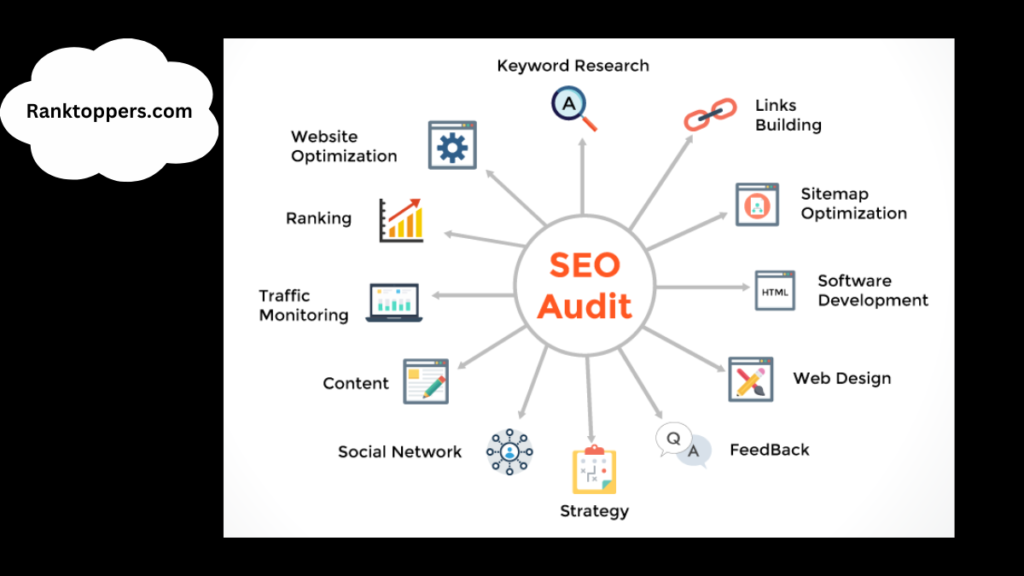What Is Technical SEO Audit Checklist?
Welcome to the world of Technical SEO Audit Checklist, where we unravel the mysteries behind search engine optimization and empower you with the tools to conquer it! In this digital age, having a strong online presence is crucial for success.
But how do you ensure that your website is optimized for maximum visibility and performance? That’s where technical SEO audits come into play. Join us as we dive deep into what exactly a technical SEO audit checklist entails and uncover the secrets to skyrocketing your website’s ranking on search engine results pages.
Get ready to harness the power of technology and unlock endless opportunities for your online business – let’s embark on this exciting journey together!
Table of Contents

Technical SEO Audit Checklist?
A technical SEO audit checklist is a great way to help ensure that your website is performing optimally in terms of search engine optimization (SEO). This checklist should include items such as:
- Is the website built on a secure and responsive foundation?
- Are all images and videos properly optimized for SEO?
- Do all links lead where they’re supposed to?
- Is the website’s code clean, well-organized, and easy to navigate?
- Are keywords used appropriately throughout the site?
- Are duplicate or irrelevant content issues being addressed?
- Is the website’s design modern and visually appealing?
- Are all links pointing to the correct pages on the site?
- Are any broken links being repaired or replaced?
- Does the website appear in relevant search engine results pages (SERPs)?
- Is the website’s contact information accurate and up-to-date?
- Are all site content tags properly placed?
- Are any pages using deprecated or unsupported HTML/CSS techniques?
- Are all images displaying correctly on search engine results pages (SERPs)?
- Does the website have any errors or potential security issues that could be exploited by hackers?
What are the components of a Technical SEO Audit Checklist?
There are a few things that should be included in any technical SEO audit checklist. These include:
- Search engine optimization (SEO) guidelines.
- Web design and development best practices.
- Technical SEO audits can help identify potential issues with your website’s on-page search engine optimization (SEO) and off-page web marketing efforts.
- The checklist should also include regular site performance audits to ensure that your website is meeting user expectations and continues to rank well in search engines.
- Additionally, you may want to consider a technical SEO audit if you are experiencing low traffic or negative engagement rates from users of your website or blog. A technical SEO audit can help identify any changes that need to be made to improve traffic and engagement levels.
- It is important to keep an eye out for new search engine algorithm updates which could have a significant impact on your website’s ranking position and potential traffic gains. If you notice any changes in rankings or traffic, it is important to take action accordingly by addressing any identified deficiencies in your site’s overall online presence.
- A technical SEO audit should be conducted on a regular basis to help identify and correct any potential issues with your website’s online presence. 8. Finally, a technical SEO audit should be conducted with the help of an experienced consultant to ensure that all findings are properly documented and act as a baseline for future optimization efforts.
Some other things to consider when conducting a technical SEO audit checklist include: - Website structure and design
- Page content and keyword research
- Technical issues that may be impacting website performance
- Internal link-building and optimization
- On-page and off-page optimization tactics
- Title tags and metadata
- Google Analytics tracking and analysis
- Third-party search engine optimization (SEO) services

How to Create a Technical SEO Audit Checklist?
When it comes to executing a technical SEO audit, ensuring that all necessary steps are taken can be daunting. That’s why we’ve put together a checklist of things you should review when undertaking a technical SEO audit.
- Review your website’s current content management system (CMS) and search engine optimization (SEO) settings. Are your pages optimized for desktop and mobile devices, as well as search engines? Is your site configured with title tags, meta descriptions, and other appropriate elements?
- Inspect your site’s coding and make sure all text is properly formatted using HTML5, CSS3, and JavaScript standards. Find any broken links or issues with images loading properly.
- Check to see if you’re using 301 redirects whenever you change the URL of a page on your site. This will help prevent duplicate content from appearing in search results.
- Review your server configuration and identify any potential issues that could impact your website’s performance or SEO rankings. Is your web server hosting enough traffic? Are there any outdated software versions installed on the server? Are there any security risks associated with the domain name or hostname?
- Conduct a Google Search Console audit to identify any issues with webmaster policies (e.g., spammy links), duplicate content, etc.
- Identify any third-party services or plugins that may be impacting your website’s SEO performance (e.g ., Google Analytics, social media plugins, etc.). Are they installed and configured correctly?
- Compare your website’s SERP rankings against those of similar-sized websites in your industry to see if there are any improvements that can be made. If you’re not seeing any noticeable improvement, then it may be time to reconsider your SEO strategy.
- Perform a site speed analysis to see if your website is running smoothly on all devices and browsers. Is your content loading quickly enough? Are any resources being loaded unnecessarily from the server?
- Conduct a malware scan of your website to make sure no harmful scripts or infections are lurking on the server.
- Finally, review your overall SEO strategy and make any necessary changes or adjustments. This will help ensure that your website remains competitive in the search engine results pages (SERPs).
What Is The Purpose Of Technical SEO Audit Checklist?
A technical SEO audit checklist is a great way to get an overview of your website’s technical SEO. This checklist can help you identify issues with your website’s design, content, and on-page optimization. By following these steps, you can improve your website’s ranking in search engines and increase traffic.
Some of the items on a technical SEO audit checklist include:
Design: Are all elements on your website appropriately designed? Is your site’s layout user-friendly? Do users have difficulty finding the information they’re looking for?
Content: Is your content keyword rich? Is it accurately describing your product or service? Is it well-written and free from grammatical errors?
On-Page Optimization: Are your website’s pages properly coded and formatted? Are all images linked to their corresponding locations? Are your links visible and clickable?
Internal Links: Are all of your website’s links pointing to high-quality, relevant pages?
While no one checklist will work for every website, following a few key steps can help improve your technical SEO.
Conclusion
After reading this article, you will have a better understanding of what a technical SEO audit checklist is, why it’s important, and what to look for when performing one.
By having a clear overview of all the different aspects of your website that need improvement, you’ll be able to address them in a more organized and effective way. Armed with this knowledge, your website will start seeing immediate improvements in both search engine rankings and traffic volume.






